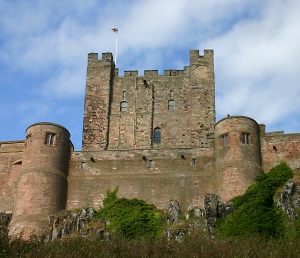Medieval Castles - The Keep
 A castle keep is usually the central tower located within a castle. Basically it is a castle within a castle as it has traditionally been used as a final defensive structure.
A castle keep is usually the central tower located within a castle. Basically it is a castle within a castle as it has traditionally been used as a final defensive structure. Early castle keeps (11th century) were usually just square towers and little more than a hall with strong walls. In France early keeps were called donjons, in Germany they were called Bergfried.
The 12th century saw the development and use of battering rams and the resulting damage that could inflict upon a castle led to central keeps being built and no longer always square but cylindrical - a cylindrical structure was harder for battering rams to damage.
Such keeps were also not just used for defence but for actual living accommodation, storing armoury and often to guard the main well.
In the 13th century things changed somewhat and many castles were constructed differently, without a traditional keep, with means of defence being concentrated in the castle towers, walls and even gatehouses. Perhaps the most well known type of castle keep is the "Norman Keep".
These keeps were very popular in England and Ireland during the 11th and 12th centuries. Many can still be seen today and they usually have as their distinguishing features:
1. Towers at each corner, extending over the walls
2. Spiral staircases in the corners
3. A forebuilding to defend the entrance, usually built above ground.
The living quarters would traditionally be at the top, above the hall and the storage rooms at the bottom. One of the most famous Norman Keeps in the world is the White Tower at the Tower of London, built by William The Conqueror shortly after his victory at the Battle of Hastings. Read more about medieval history.
An interesting variation of the keep was sometimes constructed, called a shell-keep. Usually found on top of a motte or mound, there was no tower as such but a strong wall running around the perimeter of the motte providing a defensive enclosure; there would be buildings built against it and a courtyard in the middle. Examples of shell-keeps are not very common but a good example can be seen at Restormel Castle in Cornwall England.


